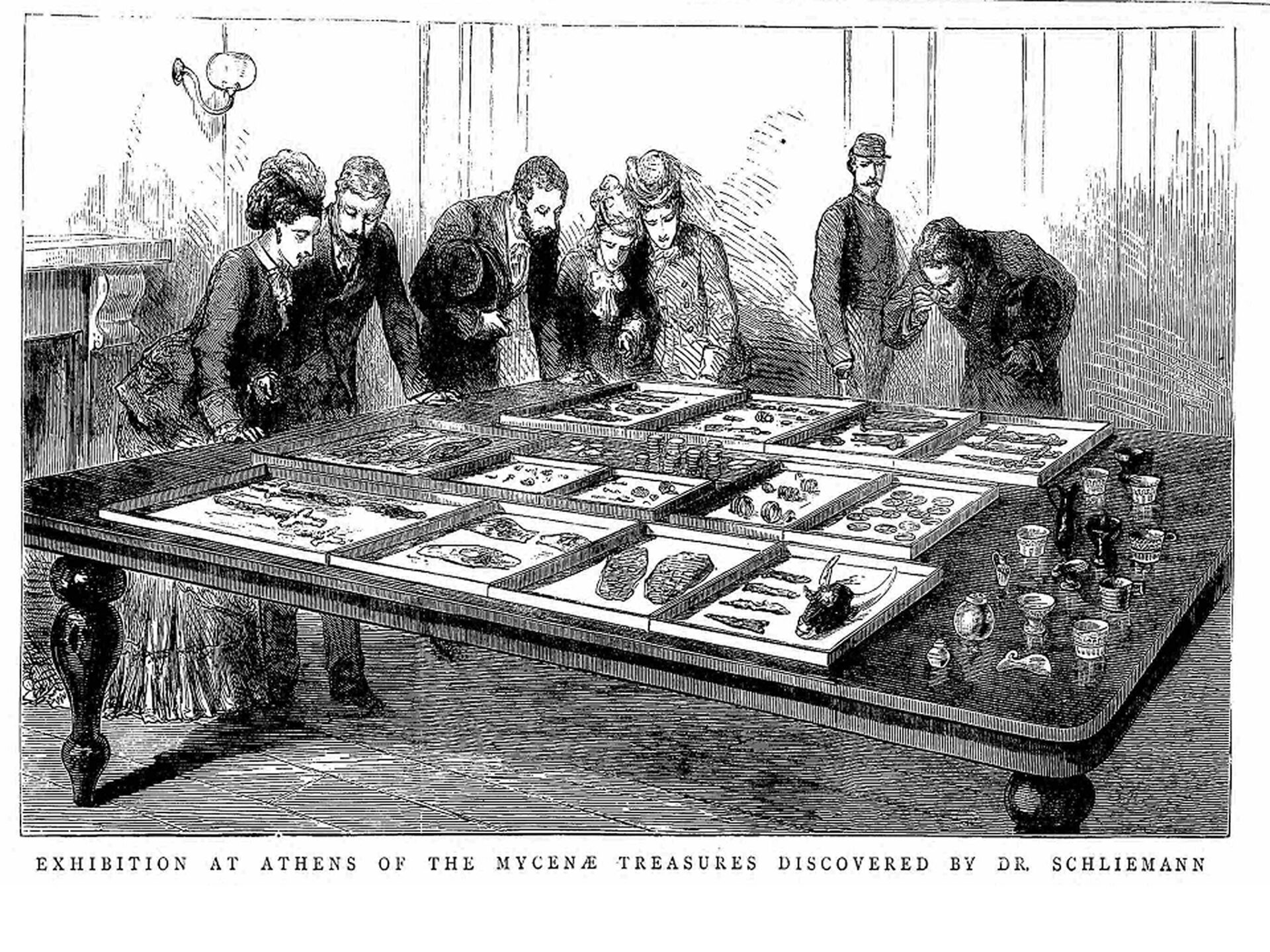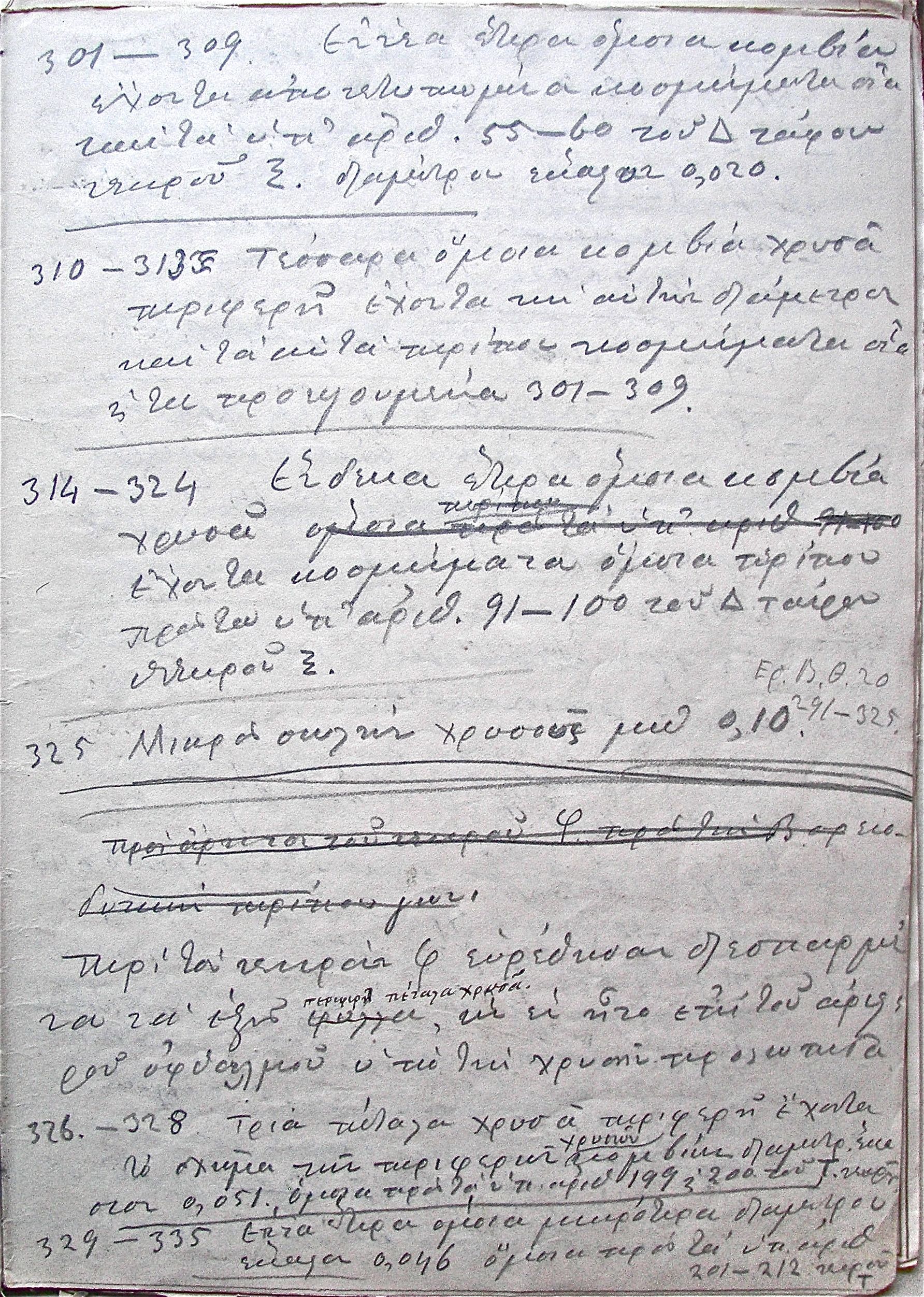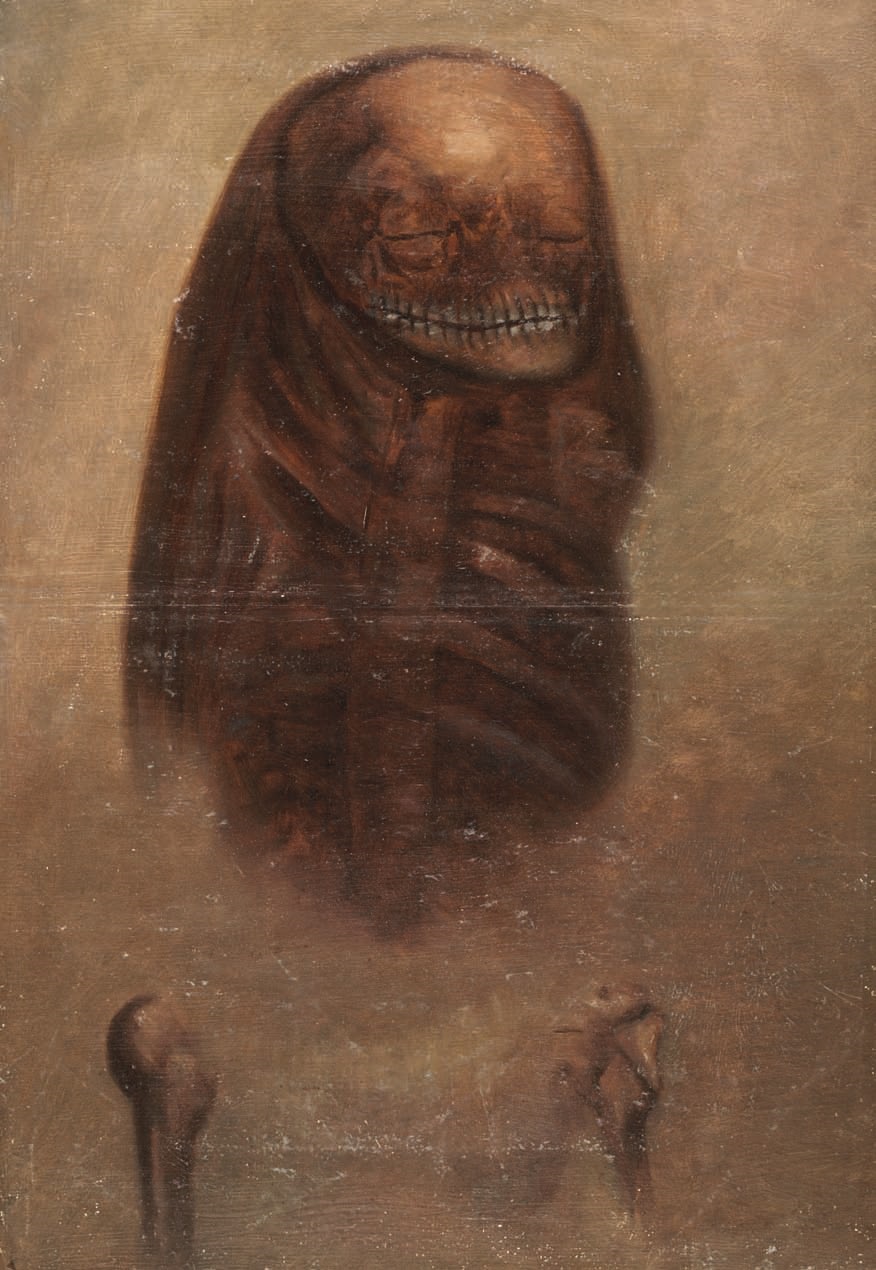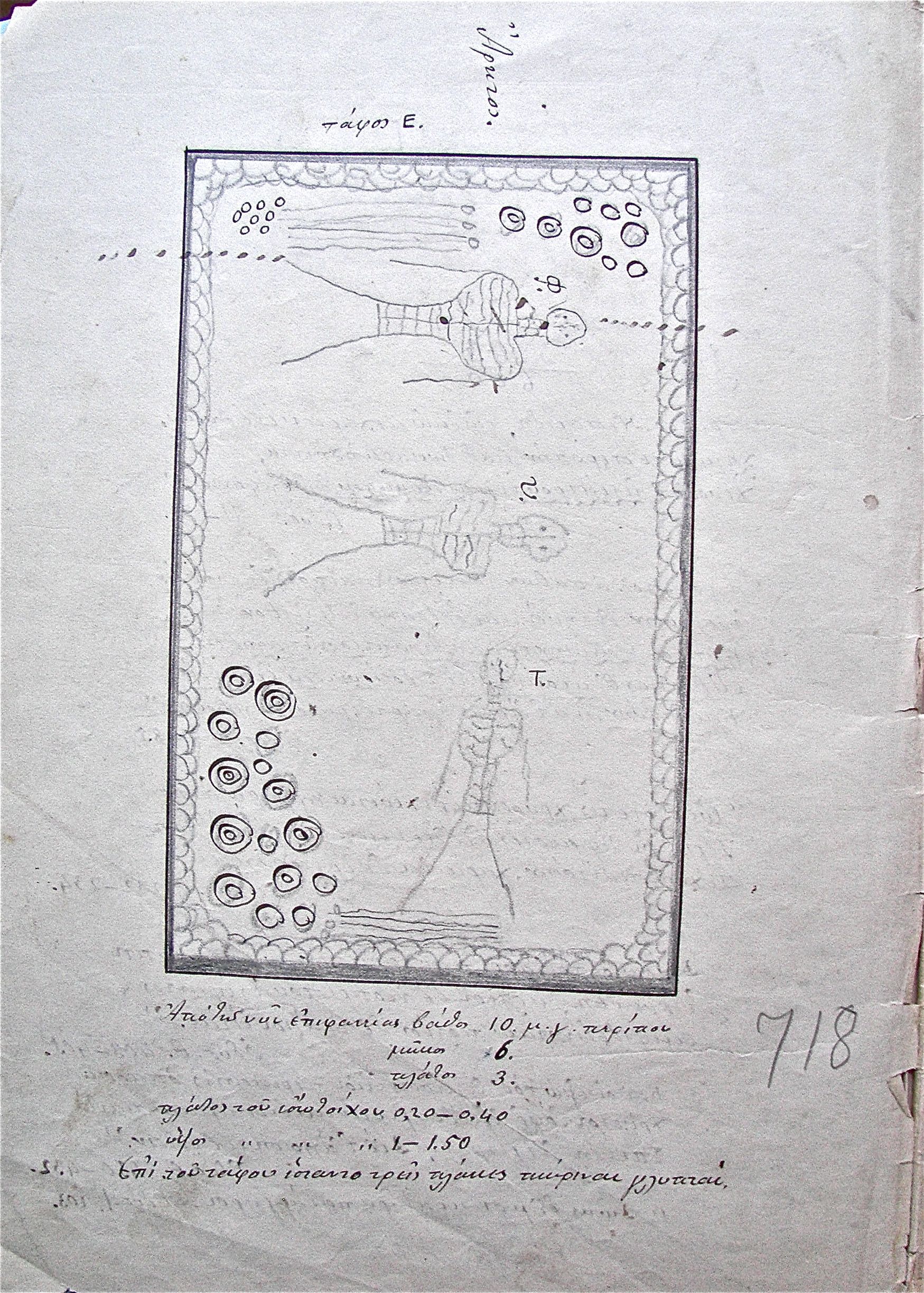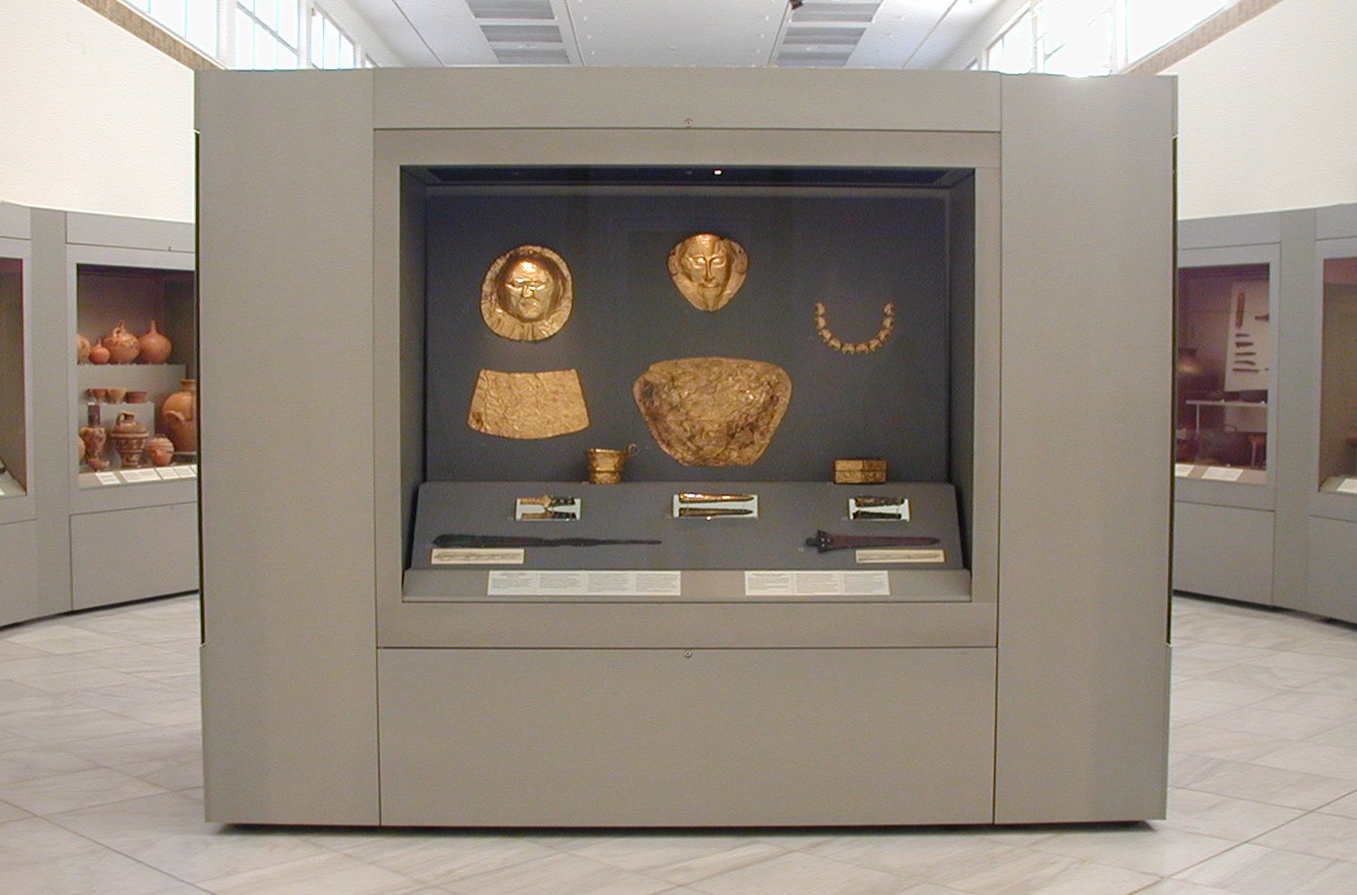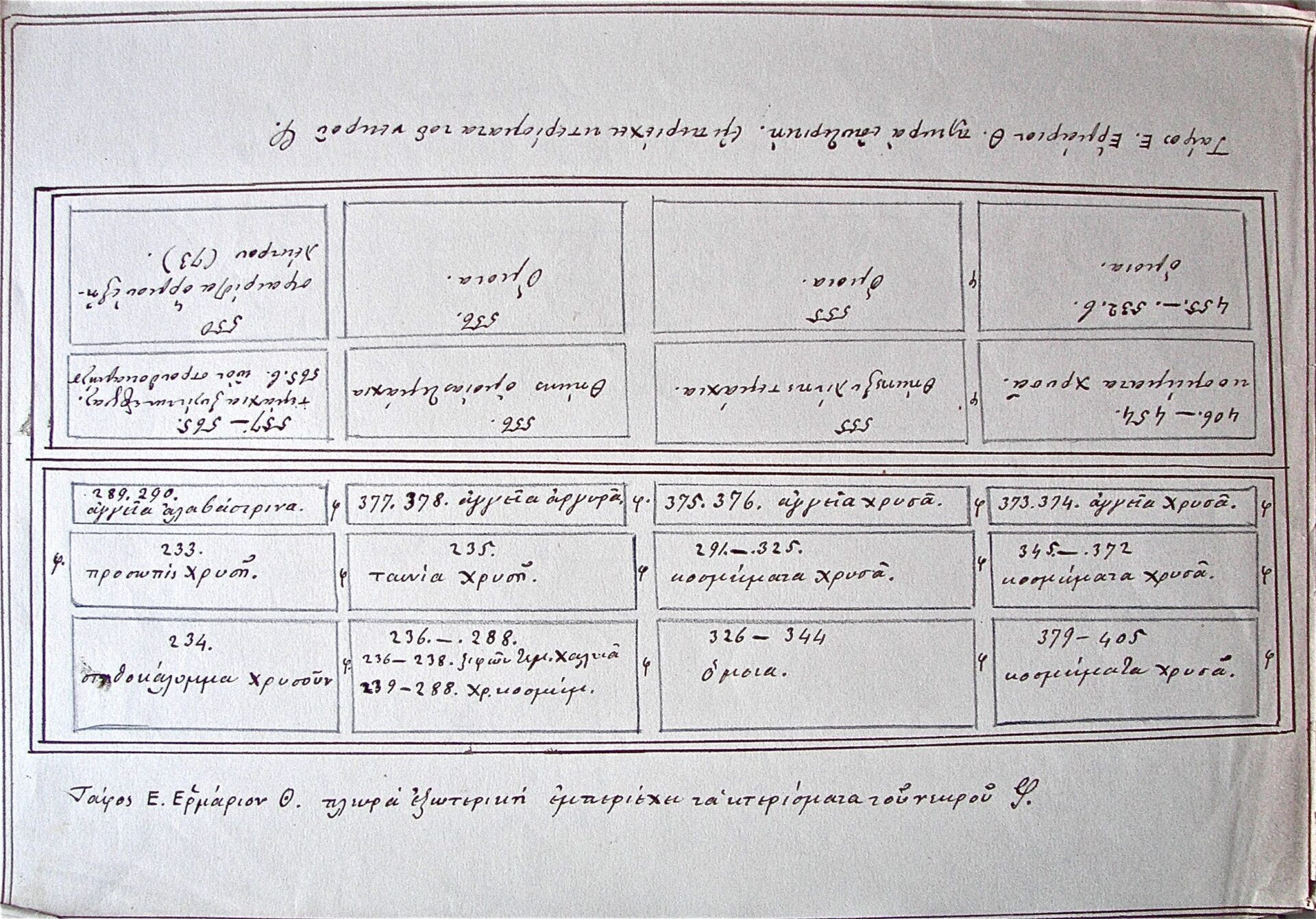Exhibit of the month
Pages from the Mycenae excavation diary of Panayotis Stamatakis
The excavation of Grace Circle A of Mycenae by the German archaeologist Heinrich Schliemann under the supervision of the Ephor of Antiquities Panagiotis Stamatakis in 1876, dazzled the whole world with the abundance of its valuable finds (Fig. 1). The famous “mask of Agamemnon”, depicting the stern, imposing figure of a man, was first identified by Schliemann with the Homeric king who led the Achaeans to Troy. However, today we know that the dead of Circle A belong to the first generations of Mycenaean rulers who lived during the 16th century. BC, at least four centuries before the great war that is archaeologically identified with the Trojan War.
Although one cannot deny Schliemann’s deep love for Greek antiquity, his special intelligence and his undisputed innovations in matters such as photographic documentation and archaeometric analysis, it is a fact that his descriptions are often exaggerated and anachronistic. The contribution of the excavation diary of Panagiotis Stamatakis -a great but unfortunately unrecognized archaeologist-, put an end to several of these exaggerations and restored the scientific credibility of the excavation of Grave Circle A. With unparalleled method and professional devotion, Stamatakis recorded the six tombs of Circle A (I-VI), information on the condition of the bones, and one by one all the objects at the place where they were found, giving essentially “identity” to those first Mycenaean lords (Fig. 2).[i]
The data of the diary in combination with the anthropological examination of the remnants of Circle A by an interdisciplinary team of distinguished researchers, the conclusions of which were published in a series of articles (Papazoglou-Manioudaki et al. 2010, Dickinson et al. 2012), allow us today to restore inaccuracies such as the one that is reproduced from time to time, based on a description by Schliemann, about the famous “mummy” of Tomb V.
In his famous – third volume – Album about Mycenae and Tiryns, he lists in table 203 (volume III), an oil painting of the supposed “mummy”, now in the possession of Mr. Sinclair Hood (Fig. 3). Although the image does not resemble a mummified corpse, it created a myth that to this day causes confusion and questions.
Tomb V contained the burials of three men (according to Stamatakis, individuals T, Y and Φ, Fig. 4) who were richly furnished with weapons, gold jewelry and valuable utensils. Two of the dead wore golden masks and breastplates. It is characteristic that initially Schliemann’s attention was attracted by the deceased of the northern end (individual “Φ” according to Stamatakis). After removing the mask, according to Schliemann’s description, “a round face which was beautifully preserved … both eyes perfectly visible” was revealed, but he never described it as a “mummy”. On the contrary, his exact words were that “the color of the body is very similar to that of an Egyptian mummy” (Schliemann 1880, 296) and he spoke of an “almost mummified body” only after it was covered with alcohol and vegetable glue (“Gum-sandarac”) by a local pharmacist for maintenance purposes (Schliemann 1880, 298, 454, 473).
The remains of the deceased Φ were transported to Athens in a plaster cast and were presented as a permanent exhibit in the Mycenaean exhibition of the National Archaeological Museum before World War II, as we are informed from brief references in the Guides of the Mycenaean Collection (P. Kavvadias. 1894, 18, V. Stais 1909, 1926, Philadelpheus 1935, 62-3) but also in other archaeological publications of the time (Chr. Tsountas – J.I. Mannat, The Mycenaean Age, London 1897, 95–6) referring to ‘skeletal remains’. The “mummy” is not even mentioned in Schliemann’s first little guide to the treasures of Mycenae as exhibited at the Technical School of Athens.
In 1937, the anthropologist John Lawrence Angel was the first to study some of the skeletal remains of Circle A; in his report, published only in 1973, in the context of the publication of Grave Circle B of Mycenae (Mylonas 1973), he does not make any reference to the so-called “mummy”.
When the plaster cast containing the remains of the deceased Φ was located and excavated in the storerooms of the National Archaeological Museum in 2002, it was found to contain small amber beads and a few gold and copper foils, along with five teeth and a fragment from a pelvic bone which probably belonged to a woman (Demakopoulou 2002, 3, fig. 2 a; Dickinson et al. 2012, 18). Despite the ongoing search for the remains of the deceased Φ among the skeletal material that is preserved today in the National Archaeological Museum, unfortunately there is no definite identification to date. However, all the evidence, from the time of the excavation of Grave Circle A until today, testifies to a misinterpreted description of Schliemann that most probably does not correspond to reality (Papazoglou-Manioudaki et al. 2010, 164-166).
The strongest argument against the existence of the “mummy” is that it is not even mentioned in the meticulous record of Stamatakis, who is restricted to the description of the east-west orientation of the deceased Φ and his grave goods, the golden mask and the breast (Fig. 5), without making the slightest comment on the condition of the bones. The testimony of Stamatakis is of particular importance since not only was he an eyewitness during the excavation of Tomb V but also the person primarily responsible for transporting the bones and movable finds of Circle A to Athens and for curating their exhibition at the Polytechnic (Fig. 6). And no matter how much his relationship with Schliemann was strained, the professionalism and integrity that characterized his whole life would not allow him to conceal such an event.
Dr. Eleni Konstantinidi – Syvridi
BIBLIOGRAPHY:
Demakopoulou, K. Εθνικό Αρχαιολογικό Μουσείο, Συλλογή Προϊστορικών, Αρχαιολογικόν Δελτίον, Χρονικά, 52 (1997), 1-3, Athens 2002.
Dickinson, O.T.P.K., Papazoglou-Manioudaki, L., Nafplioti, A. and Prag, A.J.N.W., Mycenae Revisited. Part 4: Assessing the new data, Annual of the British School at Athens 107 (2012), 1 – 28.
Konstantinidi-Syvridi, E., Paschalidis, C.,The unacknowledged Panayotis Stamatakis and his invaluable contribution to the understanding of Grave Circle A at Mycenae, Archaeological Reports, vol. 65, Cambridge University Press, November 2019, 11-126.
Mylonas, G. Ο Ταφικός Κύκλος Β των Μυκηνών, Athens 1973.
Papazoglou-Manioudaki, L., Nafplioti, A., Musgrave, JS, Prague, AJNW, Mycenae Revisited: The human remains from Grave Circle A at Mycenae. Part 3. Behind the masks: A study of the bones of Shaft Graves IV, Annual of the British School at Athens 105 (2010), 157-224.
[i] The manuscript of Panagiotis Stamatakis belongs to the archive of the National Archaeological Museum and its transliteration and study have already begun in order for this invaluable treasure to be soon available to the academic and wider public.


